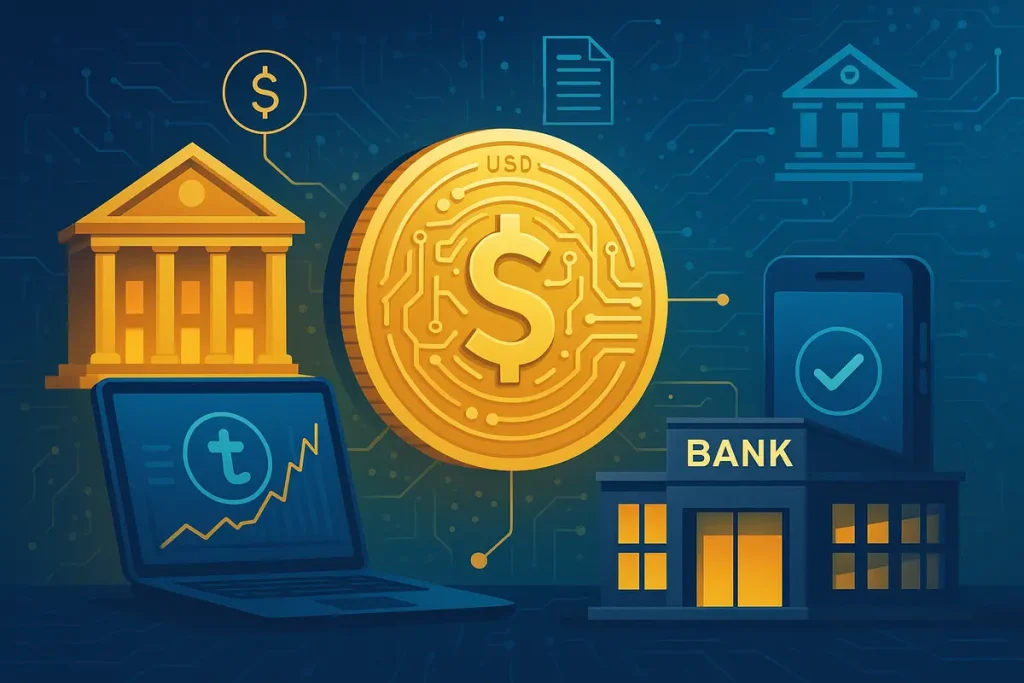The Rise of Stablecoins in Traditional Finance
Stablecoins, digital currencies pegged to fiat assets like the U.S. dollar, offer the stability of traditional currencies combined with the benefits of blockchain technology. Their adoption is being driven by the need for faster, cheaper, and more transparent payment solutions.
According to Fireblocks, 90% of institutional players are either using or planning to use stablecoins, with a significant focus on cross-border payments and speed as key benefits . This widespread adoption is reshaping the financial landscape, prompting traditional financial institutions to integrate stablecoins into their operations.
Major Financial Institutions Embrace Stablecoins
Several prominent financial institutions have taken significant steps towards integrating stablecoins:
Circle: Following its IPO, Circle applied for a national trust bank charter to manage its USDC reserves and offer custody services for tokenized assets
Mastercard: Unveiled end-to-end capabilities to power stablecoin transactions, aiming to facilitate global stablecoin payments.
Visa: Developed solutions to integrate stablecoins into the next generation of payments, ensuring compatibility with banks and fintechs.
These initiatives highlight the commitment of traditional financial institutions to adapt to the evolving digital currency landscape.
Regulatory Developments
Regulatory clarity is accelerating the adoption of stablecoins. The U.S. Senate’s passage of the GENIUS Act, which mandates full reserve backing and compliance with anti-money laundering standards for stablecoins, is a significant step towards formalizing their role in the financial system.
Despite these advancements, some traditional financial institutions remain cautious. JPMorgan, for instance, has reduced its projections for stablecoin market growth, citing concerns over regulatory uncertainties and market volatility.
Strategic Advantages of Banks and Fintechs
The integration of stablecoins offers several strategic benefits:
Enhanced Payment Speed: Stablecoins enable near-instantaneous settlement of transactions, reducing delays associated with traditional banking systems.
Cost Efficiency: By eliminating intermediaries, stablecoin transactions can lower fees, particularly in cross-border payments.
Programmability: Smart contracts associated with stablecoins allow for automated and customizable financial transactions.
These advantages are compelling banks and fintechs to explore stablecoin integration as a means to improve service offerings and operational efficiency.
The trajectory of stablecoin adoption suggests a future where digital currencies play a central role in financial transactions. As regulatory frameworks solidify and technological infrastructure improves, the integration of stablecoins by banks and fintechs is expected to deepen. This evolution could lead to more inclusive financial systems, offering enhanced services to a global customer base.
The adoption of stablecoins by banks and fintechs in 2025 marks a pivotal shift towards a more efficient and inclusive financial ecosystem. While challenges remain, the momentum towards digital currency integration is undeniable, promising a transformative impact on the financial industry.


